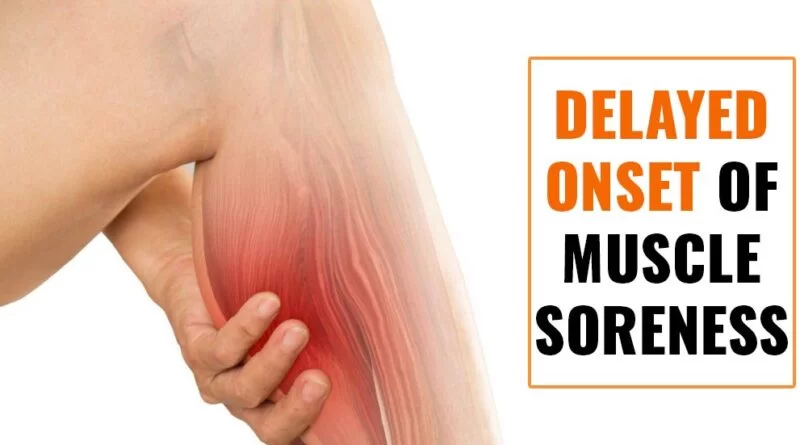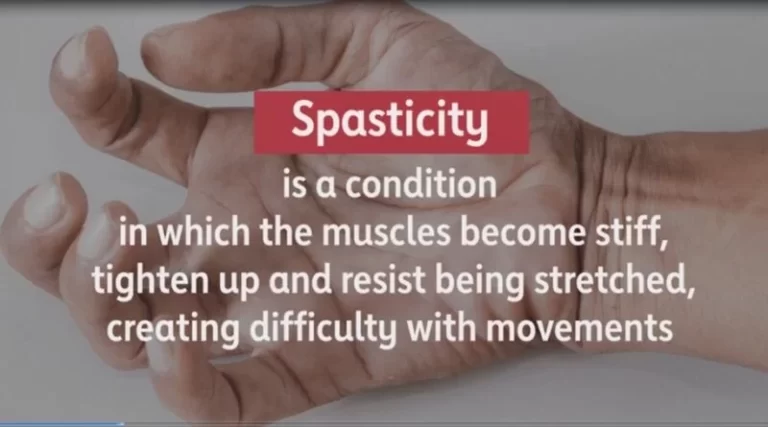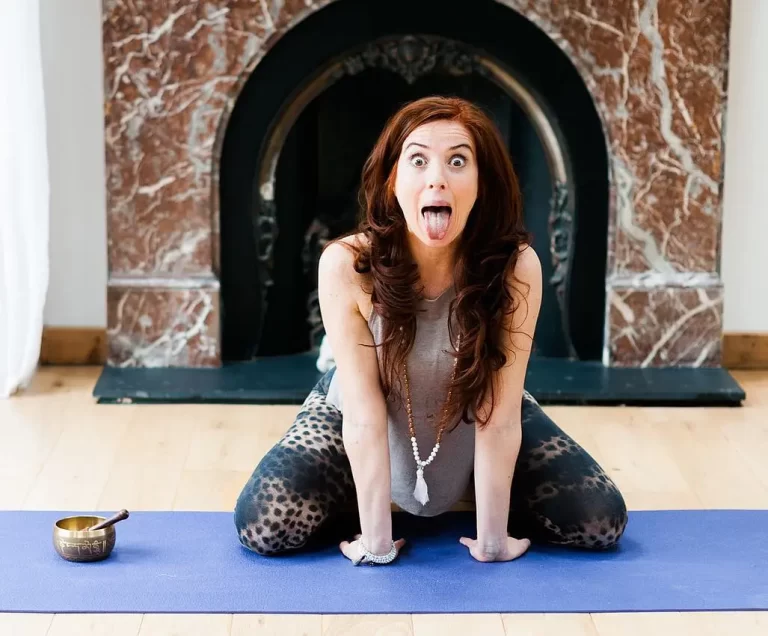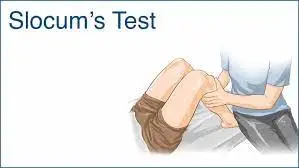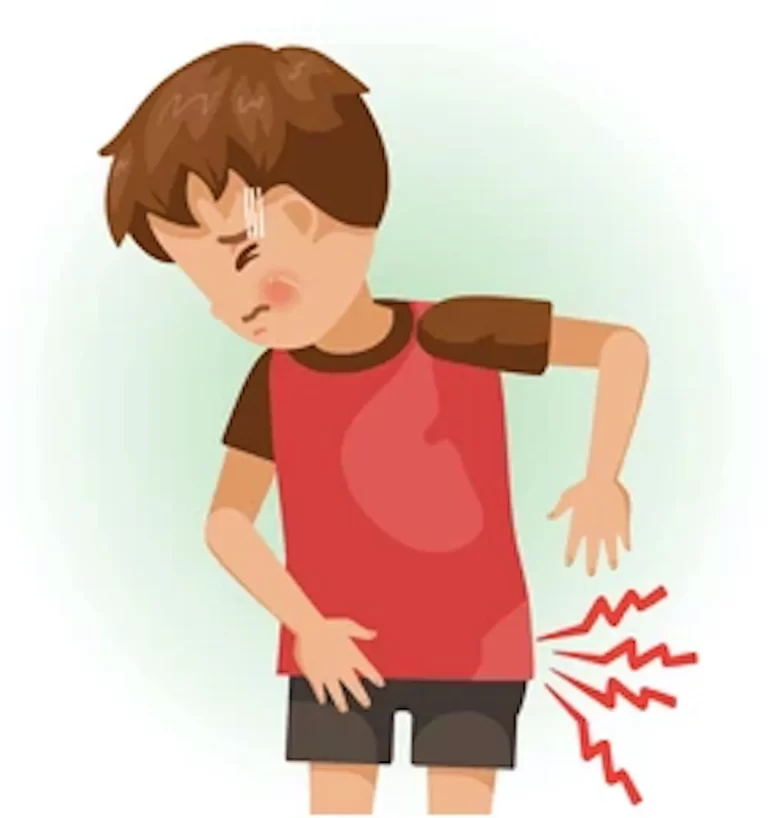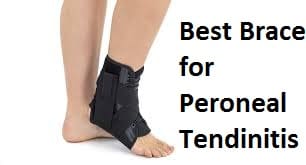Muscle soreness in the Calf Muscle
Muscle soreness in the calf, commonly referred to as calf soreness or calf pain, is a prevalent and often uncomfortable condition that affects individuals of all ages and fitness levels. The calf muscles, located at the back of the lower leg, play a crucial role in activities such as walking, running, jumping, and maintaining balance. Consequently, when these muscles become sore or painful, it can significantly impact a person’s daily life and physical performance.
Calf soreness is a very common problem nowadays. About 70% of grown-ups experience night calf aches or cramps, according to research. Recurrent painful calf cramps can be so painful at times, that they may disturb your sleeping – resulting in sleeplessness and seriously impacting your life in more ways than one.
Sore calves are no prank particularly if you have ever participated in jerking awake in pain at night. If a sore calf has you stressed, then quit your workout for some days. we understand how severe this disease can be and like to help you deal with sore calves via this informative guide.
Calf soreness mostly occurs due to Overloading the muscle and inadequate strength
- A sudden increase in calves’ workload as a result of hiking or athletics
- Inadequate recovery between activities
- Different biomechanical factors and walking patterns
- Any weakening could cause a constricting feeling.
- Weakness may result from inactivity or issues like past injuries.
Table of Contents
Introduction
Sore calves can be caused due to attending new activities and they can go goes within a few days. If this is not treated correctly then, calf tightness and discomfort from exhaustion or neuromuscular soreness continue to affect your activities of daily life.
Calf Muscles: Basic Anatomy
Our lower limbs bear the brunt of most of our activities, absorbing effect forces from the floor and transmitting body forces against gravity. Persistent pain and soreness can evolve into a major worry, as it affects your entire life. Before listing causes for your calf soreness, here are a few points you must know about the anatomy of the calf.
The calf creates the back part (or “posterior compartment”) of the lower leg. The mass of the calf is composed of two muscles. These are the bigger gastrocnemius and the shorter soleus muscle. The obvious, protruding muscle that everyone can see is the gastrocnemius. It has two heads, giving it a distinctive diamond form similar to that of athletes and armed forces members.
The flat soleus is located below the gastrocnemius. They converge and narrow towards the heel’s base. They adhere to the Achilles tendon and are connected by connective tissue. The actual tendon is put into the heel’s calcaneus bone.
The calf muscles
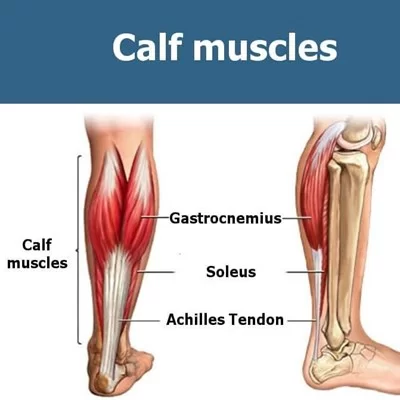
An intricate network of veins, arteries, and nerves runs throughout the calf muscles. A technique of valves and pumps is situated in the calf muscles. This system is called your “peripheral heart.” This is because, when you are in an upright position, the calf muscles operate against gravity to close the valves – contracting and pushing blood from your legs towards your heart.
The valves open and the veins fill with blood when the calf muscles are relaxed. Per contraction, this “peripheral heart” drives about 50 – 60% of the blood towards your heart.
Your calf muscles are themselves provided by the popliteal artery. This is a component of the femoral artery, the major artery of the leg that reaches from the aorta. After there, the popliteal artery splits into the anterior and posterior tibial arteries, which supply the ankle, foot, heel, and sole with oxygen and nutrients.
As distant as the nervous supply is involved, the major nerve of the leg is the sciatic nerve which begins in the lower back and gets the lower leg through different branches like the peroneal nerve, tibial nerve, and saphenous nerve.
Common Causes Your Calf muscle feels sore
Keep in mind the basic anatomy of the calve muscles, We can directly look at some of the common causes you may experience sore calf or lower leg pain. While the course of the pain may vary, you might find that all of them tend to have very similar symptoms. Cramps, incapacity to carry the leg, swelling, and discomfort.
- Trauma
- Vigorous activities or sports
- Thrombosis of deep vein
- Vascular disease of the periphery
- Ankle’s limited range of motion
- Dehydration
- Poor blood flow
- Muscle damage
- Nutritional imbalances
- Adverse effects of medication
- Training mistakes
DOMS
Delayed Onset Muscle Soreness or DOMS is the pain and soreness people experience after a strenuous activity. It usually occurs almost 24 to 72 hours after training. This usually happens if you have just initiated or restarted exercising after a long period of inactivity. It can also occur if you overexert your muscles. Because it can seem almost two days after your workout it is called delayed onset muscle soreness and is frequently mistaken for a muscle tear.
What does DOMS feel like?
Your calf muscles will feel cramped. It will feel helpless and the pain may be a dull throb that does not go away. Dehydration can exacerbate DOMS. Maintaining hydration can therefore help. However, as you work out and the muscles adjust to the added stress, it will reduce with time.
Calf Muscle Strain
Calf muscle strains affecting the soleus and gastrocnemius muscles usually happen when the two have been overstretched during training. These muscles are found in the back of your leg and make up the bulk of your calf. The muscle fibers have some extent of tears which result in muscle inflammation and pain. You will feel the discomfort directly in the center of the calf’s midsection. Most calf stresses arise due to aggressive uncoordinated movement or during high-movement events, like running or cycling. Muscle strains are usually graded.
A calf muscle strain Grade
- Grade 1: This is a gentle tear of a few muscle fibers. Here you will find the muscle is painful on touch but holds its normal strength. You can walk and utilize your legs without your range of movement being involved.
- Grade 2: This grade affects a more increased percentage of tears in the muscle fibers but not a full tear. A few of your muscle fibers may snap as a result of the damage, which may cause the muscle to be excruciatingly painful. Since it is not a full tear, symptoms may appear slowly. There may be a visual loss of strength and conditioning is affected. Usually, the person may limp and the range of movement is reduced.
- Grade 3: This is a painful tearing of the muscle fibers. It could also be a full muscle tear where the whole muscle is torn. The muscle may “pop” when the damage happens. Obvious bruising happens, and you can see the tear as a pattern. The leg has to be rested as training is severe. It is not possible to put any weight on your leg. You have to see a physician for this situation.
Muscle Cramps
Muscle cramps are impulsive and arise out of nowhere. They can occur while you are lying down or walking around. They may cause your calf muscles to feel extremely tight and rigid. The feeling you could have during cramping is best described as “pins and needles.” They are momentary and should disappear in a few minutes. You can simply upgrade the leg and wait till it gives away.
Contusion
Any damage or direct impact to the calf muscles will not only tear the muscle fibers but also damage the blood vessels providing them. This results in the blood oozing out of the vessels and into the surrounding tissue, causing pain and swelling in the muscles. A contusion forms as the blood spills over. Bruising is observable under the skin. If it persists to grow it may grow into a hematoma.
Tendinitis
Calf discomfort is one of the first signs something is wrong with your Achilles tendon. Since your calf muscles are connected to this tendon, they are the first to feel it, if there is a tear or break of your Achilles. A tendon rupture may cause the leg to pop suddenly.
Standing up or walking might cause it to rupture in elderly people, particularly if a previous tear has made it weaker. In more youthful people and athletes, moved, abrupt motion can induce the tendon to tear and become inflamed. apply the ice pack over the area and increase your foot. Do not bear any weight on the involved leg. If you hear or feel a pop, visit your physician instantly.
Deep Vein thrombosis
Deep Vein thrombosis or DVT happens when your veins develop blood clumps. These usually begin in the legs. The blood clots can be difficult as they can travel towards the lungs and generate a pulmonary embolism. When they begin in your legs, the calf muscles develop cramps.
Your skin might seem red, feel warm and sore to the touch, and your calves might swell. If you see these, visit the emergency room immediately. You should have an immediate checkup for this condition.
Peripheral artery disease
Peripheral arterial disease, or PAD, happens when the arteries’ narrowing affects the blood vessels that carry oxygen and nutrients throughout the body. Smoking and the buildup of fat in your arteries may cause it to occur more quickly. The blood supply to the legs is diminished as the arteries close. The muscles are deficient in nutrition and oxygen.
You might also have coldness or numbness in certain portions of the leg in addition to a sore calf. Consult a doctor straight away if you notice that your leg is becoming cold. The more dangerous it is, the longer the limb goes without blood.
Walking or other forms of movement frequently make the discomfort worse since they require more oxygen. Leg skin may become extremely glossy and pallid. The toenails can crack occasionally. Leg sores that take a while to cure could develop if they become worse.
Lumbar Canal Stenosis
There are five spinal bones in the lumbar vertebrae. The nerve roots and spinal cord in this region are impacted if your spinal column narrows, resulting in symptoms in the sciatic nerve that runs down your leg. In people over sixty, stenosis, or narrowing gaps in your spinal column, is a degenerative process.
Over time, the intervertebral discs become less flexible and lose height. Additionally, bony spurs may develop inside the foramina, decreasing the area.
In people over sixty, stenosis, or the narrowing of gaps in your spinal column, is a degenerative process. Your calves and legs could be in pain. Walking may cause your calves to cramp, and this pain will likely require regular respite. Sitting or lying down may help the pain to subside.
Cirrhosis
Usually, liver illness is accompanied by muscle cramping. It is yet unknown how they take place. According to studies, persons with chronic cirrhosis often experience muscle cramps that come and go, as opposed to being consistent like varicose veins.
A swollen abdomen, breathing problems, liver patches on the skin, spider veins around the navel, and increased blood pressure in the portal vein are among their further symptoms. 70% of those with cirrhosis experience similar spasms in their calves. Even if your cramps are only occasionally severe, they can nevertheless limit your mobility and quality of life.
Varicose Veins
The valves and pumps in your venous network get weakened and malfunction, leading to the development of these big, twisted, purple veins. The valves consequently fail to close and fail to pump blood back to the heart when the calf muscles flex. The veins begin to accumulate blood, giving them a spidery, obtrusive, and tortuous appearance.
In addition to this, you might get a severe calf muscle ache. You can feel a scorching or throbbing pain along with some itching near the veins. Try to take sitting breaks if you work a job that requires you to stand all day. Or, to aid your veins, start donning compression stockings.
Neuropathy
Typical causes of neuropathic pain include metabolic conditions like diabetes, infections, nerve illnesses, and more. This pain may cause the calf muscles to weaken and go numb if the nerves in the leg are compromised.
Sometimes, the pain is stronger at night. You should monitor your blood sugar levels and receive the right medications to treat your infections since it might be so bad that it is incapacitating.
Restless Leg Syndrome
Willis-Ekbom illness is an additional term for restless legs. The moniker “restless leg” syndrome refers to a more uncomfortable sensation where you could have an overwhelming want to move your legs. The discomfort is worse at night and may make you uneasy. To relieve the cramps, people must get out of bed and move about. This is not known to have a cause.
Red Flags: What To Examine Out For And When To See A Doctor
While calf discomfort is always secondary to some different underlying condition, it is important to be mindful of the red flags. Certain difficulties of calf pain can be life-threatening and will need quick treatment. We will guide you on how to spot them and have them reviewed by a medical expert at the earliest. Some of them have the potential to develop into medical emergencies and even prove lethal if not dealt with.
- Hematomas: If you can see a hematoma developing following calf contusion damage, then you are required to see a doctor. Usually, the body shuts off damaged blood vessels through its clotting function. If however, your body is failing to do so, it is because the injury is too painful. Since the compartments in the leg have confined space, large collections of blood can add stress to the muscles and induce compartment syndrome.
- Inability to walk: Achilles tendon breaks, even partial ones, can damage movement. If you find that you can not walk or walking produces too much pain, then you need to seek help.
- Respiratory Distress: A symptom that a blood clot from a DVT has traveled to your lungs is having trouble breathing. Hurry to the emergency department if you experience abrupt shortness of breath, chest pain, disorientation, or bloody coughing.
- Change in Sensation: There is a probability that the artery supply and nerve supply are affected if you lose feeling in your feet or they become cold. It is advisable to have them checked out as soon as possible to restore them right away.
- Joint Effusion: knee joint swelling that results in calf pain needs to be properly checked. You need to see a specialist if your joints are swollen.
- Ulcers: It is important to conduct more investigations on any ulcers or open sores on the leg and calf. They need to be evaluated if they are not healing. Sores are a sign that the body is unable to cure itself.
- Compartment Syndrome: If your leg seems comparably red and feels tight, with the pain escalating, you may be developing compartment syndrome. This can be seen by a doctor who will try and ease the pressure between the muscles.
- 6P’s: Consult a doctor right away if you have any of the six P’s: pain, pallor, paralysis, paresthesia (an odd sensation), pulselessness, and poikilothermia (an abnormal temperature).
Diagnosing Calf Soreness:
A physician will request you to explain your symptoms in detail. You might find the queries too invasive, but the rate of pain, frequency, and time of day, all point as they will help pinpoint the reason for your pain.
In expansion, they will conduct a very thorough medical examination. For example, Homan’s test which is squeezing the calf is done to ensure DVT, or the straight leg test is performed to study for sciatica. These initial trials help you get begun on initial therapy. The physical test helps the doctor determine the primary reason for your calf pain.
Physicians make you complete a series of tricks like the Thompson test and Garrick test where the physician’s choice asks you to increase your leg, flex, and plant your feet. It may all feel extreme but these tests help limit which muscle, nerve, and blood vessel is responsible for your pain. The straight leg test identifies nerve discomfort, while the Homan test indicates a venous problem.
Physicians may recommend doing a Doppler Ultrasound to imagine your veins. A normal ultrasound can create images but cannot monitor your blood flow. A Doppler ultrasound varies from a normal ultrasound because it can lead the blood coursing through your veins or if there is any obstacle.
To examine your tendons and joints, your doctor could request X-rays. They may also ask for CTs (Computerized Tomography scans) or MRIs (Magnetic Resonance Imaging) if they want to examine the joints and the spinal queue. In expansion, they may conduct nerve conduction investigations. These are investigations where the doctors estimate how fast the electrical impulses are being sent across your nerve.
They may ask for blood samples to prevent you from diabetes, liver function, and metabolic syndrome. If they suspect a blood clot, they may request D dimer tests. D dimer is a protein component of blood clots. It is very particularly used to check if you have DVT. For arterial diseases, they may request an angiography. This is like an X-ray, done by orienting a dye into your bloodstream. It is especially used to see the blockages of your routes. Be ready to deliver a list of the medications you take. Drugs like iron sucrose, conjugated estrogens, raloxifene, naproxen, and teriparatide are deeply associated with nighttime leg cramps.
Treatment for Calf soreness:
The cause mainly determines how to manage calf pain.
- Rest: Reduce activities or take some time to rest when you experience calf pain. You are overworking the muscles that are already partially injured and in need of recovery. Frequently, doing this action is all that is needed to relieve
- Elevate: Lift your leg off the ground so gravity won’t affect your veins and muscles. By raising your leg, you relieve pressure on the venous system’s pumps and valves that control how quickly blood returns to the heart.
- Ice and Heat: Applying cold packs or heating pads, depending on the source of your pain, will be beneficial.
- Compression Stockings: Doctors may advise using compression stockings to help the calf muscles if you have varicose veins.
- Over-the-counter (OTC) medications: Any soreness can be temporarily reduced by over-the-counter painkillers. Ibuprofen and naproxen, both available over-the-counter (OTC) drugs, may be used to treat aching calves. It is best to only take any medication, though, after speaking with your doctor about it.
- Antioxidants and protein: In the first 24 hours after an injury, proteins were proven to aid in the recovery of muscular function; however, including antioxidants in meals further accelerated recovery. Tart cherry juice is rich in anti-inflammatory and antioxidant components. People who drink sour cherry juice during their recuperation process reportedly experience less muscle soreness. The anti-inflammatory qualities of cherries may help to lessen discomfort in the muscles.
- Medications: Depending on the reason for the discomfort, you may be prescribed drugs to thin the blood and reduce the pain.
- Surgery: You will need surgery if a tendon or a muscle ruptures.
- Use a foam roller: Using foam rollers to ease calf muscle pain encourages muscle healing. Foam rolling has been associated with reduced muscle edema and enhanced tissue repair. 20 minutes of foam rolling on a high-density foam roller after working out can help minimize stiffness in the muscles and improve one’s dynamic motions throughout the next 24 hours.
- Massages: Although athletes swear by massages to reduce calf discomfort, the jury is still out on whether they work. Nevertheless, you can try using a foam roller to ease some muscle strain.
- Physical therapy: The most effective method for managing calf pain is this. No matter the cause, it is a component of all therapies. Here, we offer a lengthy list of stretches and progressive strengthening workouts to help you stop dealing with calf pain daily.
Best Stretches and Exercise for Calf Soreness
Due to the anatomical importance of the calf muscles in these joints, some of our stretches and exercises also focus on the hip, knee, and ankle joints. Warm up first, then gradually progress to exercises, and finish with a full cooling-down. Stretching can help your calf muscles feel less sore. Calves can be extended to increase muscle fiber length and lessen discomfort.
It’s important to carefully and steadily stretch your calf muscles. Remember to start with light stretching and not go too far. Even while stretching could be painful, it shouldn’t hurt. To prevent such injuries in the first place, you might incorporate strengthening workouts into your routine. If you are unsure about stretching exercises, you can follow the workout instructions.
The calf stretches With a wall
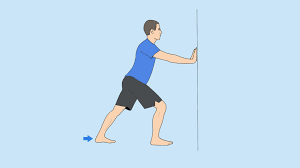
- To perform this stretching you have to Stand in front of the wall at approximately an arm’s length. Set the left leg anterior to the right. Get both arms to the wall.
- Push the back (right) heel into the ground and straighten the back leg while holding the front leg flexed. Maintain this position for 25 seconds.
- Repeat the stretch on the opposing side.
The calf stretches Without a wall
- Arrange the left leg front to the right leg.
- move your body’s weight onto the left leg, while maintaining the back heel pressed into the ground. maintain this position for 30 seconds. Do this stretch on the opposite side.
Heel cord stretch with bent knee
- We need to utilize a wall for this section.
- The left leg should be in front of the right leg as you stand.
- Point your toes slightly inward while bending your left knee slightly at the rear. In opposition to the wall, place both hands.
- Put the hips up against the wall while keeping both heels flat on the floor. For 30 seconds, keep the position.
- On the opposing side, repeat the stretching.
- To prevent bending to one side while performing this stretch, keep the hips positioned midway between the two feet.
Towel Stretch
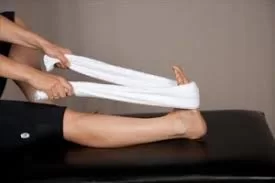
- A hand towel is required for this stretching.
- To do this stretching you have to Lie down on the ground or mat and extend both of your legs in front of you.
- The hand towel should be wrapped around one foot’s ball. Hold the towel in both hands.
- Pull the towel towards the body while keeping the legs straight, then hold the position for 30 seconds.
- Complete this stretching Three times and then switch to the opposite side and repeat.
- If necessary, control the stretch’s intensity by applying more force to the towel. Throughout the stretch, the back should be relaxed.
Calf raises
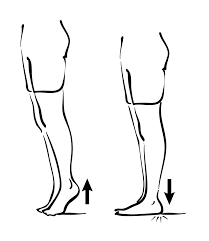
- For support, use a chair or tabletop.
- Put an equal amount of weight on each foot when you stand. For balance, cling to the edge of a table or the back of a chair.
- Lift the right foot while bending the right knee. The entire body’s weight should be supported on the left foot.
- Raise the left heel as high as you can while maintaining a straight left leg. Ten times, lower it and repeat the motion.
- Change to the other side.
Plantarflexion with resistance band
- Wrap a resistance band around the dorsal part of the foot, and maintain both ends in your hand.
- Extend the foot slowly away, letting it settle back into a resting position.
- With only a few seconds of hold in between sets, aim for 3 sets of 10–20 reps.
- Once you find this exercise to be simple, you can either advance to full calf raise exercises or increase the resistance band’s tension.
- To target the soleus muscle in the lower part of the calf, perform this exercise again while bending your knee.
Dorsiflexion Stretch with resistance band
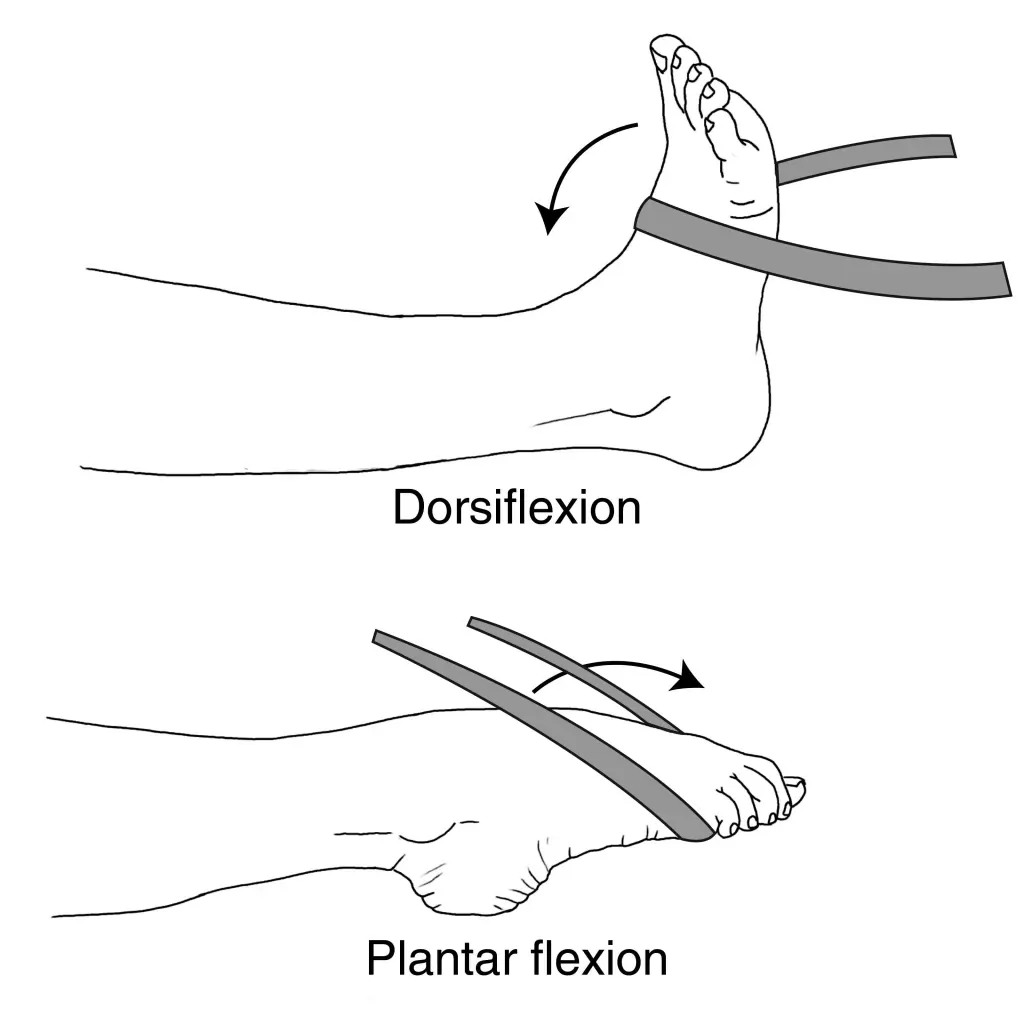
- Around a fixed object, wrap a resistance band. Face the object while seated on the ground with your legs extended. When stretching the band between your foot and the fixed item, make sure there is tension in the band by wrapping it around the middle of your foot. Draw your toes closer to you to flex your foot. After pausing, go back to where you started. Complete 10 times. then switch the leg.
Tiptoe Walk
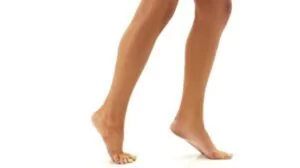
- Walk while standing on your tiptoes.
- Never let the bottom of your heels touch the ground.
- For more effective muscle activation, perform this calf exercise barefoot if possible.
Lateral Lunge to Curtsy Lunge
- Perform this exercise in standing while holding a plate, a dumbbell, or no weights at all.
- Step your right foot out to the side in a lateral lunge and hinge your hips back.
- In order to stand up, push off this foot. Then instantly extend your right leg behind your body in a curtsy lunge.
- Repeat alternating legs.
Prevention of Calf soreness
You can usually control developing calf pain in the first place by making a few lifestyle modifications.
- Warmup: We can not emphasize this sufficiently. And to indicate how critical it is to warm up, we have highlighted five warm-up stretches above. These extend your muscles from your hip down to your ankle.
- Don’t Overdo it: You will mostly listen to people say, ‘I’m done when I’m done.’ Yes, your muscles will all be “done in”, if you go through the pain. Do not overwork your muscles. When in pain, stop. Do not just start with high-intensity activities. Relax into them.
- Stay Hydrated: loss of water and loss of electrolytes can result in muscle cramps. So make sure you take a high-electrolyte liquid rich in calcium, magnesium, sodium, and potassium at hand.
- Cool Down: Once you are complete with your exercise, cool down. gradually reduce your workout time to fifteen minutes before you stop.
- Quit Smoking: Smoking is known to restrict your blood vessels, so stop it.
- Ditch the Alcohol: High alcohol consumption may induce liver cirrhosis. If you have a liver disorder you have to stop your alcohol consumption.
- Sit down: If you are in an employment that needs you to stand all day, when you reach home, rest and raise your leg. This will reduce the pressure on your venous valves and control varicose veins.
- Don’t ignore back pain: Back pain can precede nerve constriction or stenosis in the spinal column. You may prevent it from getting more threatening by identifying and treating it early. By the time your calf is interested, you may have a compression of a nerve or the spinal cord.
- Keep a healthy weight: This is the most serious, the peripheral heart must work much harder to pump the blood back to your heart. Make it more comfortable for your calf muscles and joints by maintaining a healthy weight for your height.
- Screening: Get screened regularly for diabetes and cholesterol if you are over 40.
- Review your Medications: Since individual drugs induce nighttime muscle cramps, examine your medications with a doctor and see if any of them are reliable for your calf pain.
An End to Calf soreness
Calf pain is strongly preventable. There is no reason for you to always live with it when you can prevent it from occurring or getting more threatening. At the mobile physiotherapy site, we were constantly adding activities and stretches for everyday muscle problems like calf pain. At the same time, we have described the most useful stretches and exercises. If you can not stand, we are shown stretches for calf pain in sitting.
Following the stretch, you begin with the low-resistance exercise for several weeks. In the starting phase, you may do a single repetition and find it challenging. It is only honest. Gradually improve the repetitions and resistance of the training set. Our professionals should be able to show you about the process and posture of each set. We would be happy to answer them. You can begin with a simple schedule and see how it helps you. our plan is for you to complete physical therapy your top treatment as it’s recognized as the mainstay in the therapy of calf strains and injuries. We comprehend calf soreness, can be debilitating but it does not carry to be so.
FAQ
A combination of conditions and problems can cause calf pain, including:
Muscle cramps: Muscle cramps in the calf are a typical problem for those who work frequently.
Muscles strain.
Arterial claudication.
Neurogenic claudication.
Achilles tendinitis.
Compartment syndrome.
Diabetic neuropathy.
Plantar fasciitis.
In the less severe cases, it usually takes up to three days for a torn calf muscle to begin feeling better. In the most extreme cases that do not need surgery a full recovery may take up to six weeks.
Care and Treatment
Rest: Avoid walking or running with calf muscle aches.
Ice: Place an ice pack or cold compress on your calf muscles for 10 minutes every two hours.
Compression: Use a compression bandage or tape to your calf.
Elevation: Raise your leg into an elevated position, preferably above the level of your heart.
Rest: You are not allowed to run or do physical activity to prevent further damaging the calf. Ice: Apply an ice pack over the affected site for twenty minutes every 2 hours. Do not apply it directly to the site. Compression: Decrease swelling and fluid buildup by applying a constriction bandage or tape to the injured area.
Vitamins B1, B12, and D may help reduce them, along with potassium and magnesium.
Healthy calf muscles can help to absorb the impact forces induced during exercises like running and jumping, decreasing the pressure placed on the lower limb and reducing the chance of damage such as shin splints, stress fractures, and Achilles tendonitis.
Tips to reduce muscle soreness
Practice active recovery. Evidence indicates that static stretching after a workout won’t assist with muscle soreness.
Opt for ice or heat treatment.
do foam rolling.
Believe in massage therapy.
Wear compression garments.
Use kinesiology tape.
Use essential oils.
Add anti-inflammatory foods to your diet.
References
- Healthdirect Australia. (n.d.). Calf pain. Causes, Treatment, and Prevention | Healthdirect. https://www.healthdirect.gov.au/calf-pain#:~:text=Calf%20pain%20is%20usually%20caused,away%20quite%20quickly%20by%20themselves.
- Cluett, J., MD. (2023). Causes of calf pain and treatment options. Verywell Health. https://www.verywellhealth.com/causes-of-calf-pain-and-treatment-options-2549387
- Calf problems. (n.d.). NHS Inform. https://www.nhsinform.scot/illnesses-and-conditions/muscle-bone-and-joints/self-management-advice/calf-problems
- Anthony, K. (2023, March 28). Calf pain: causes and treatments. Healthline.
- Mbbs, K. K. (2022, November 4). How do you relieve sore calves? 10 home remedies & treatments. MedicineNet. https://www.medicinenet.com/how_do_you_relieve_sore_calves/article.htm

